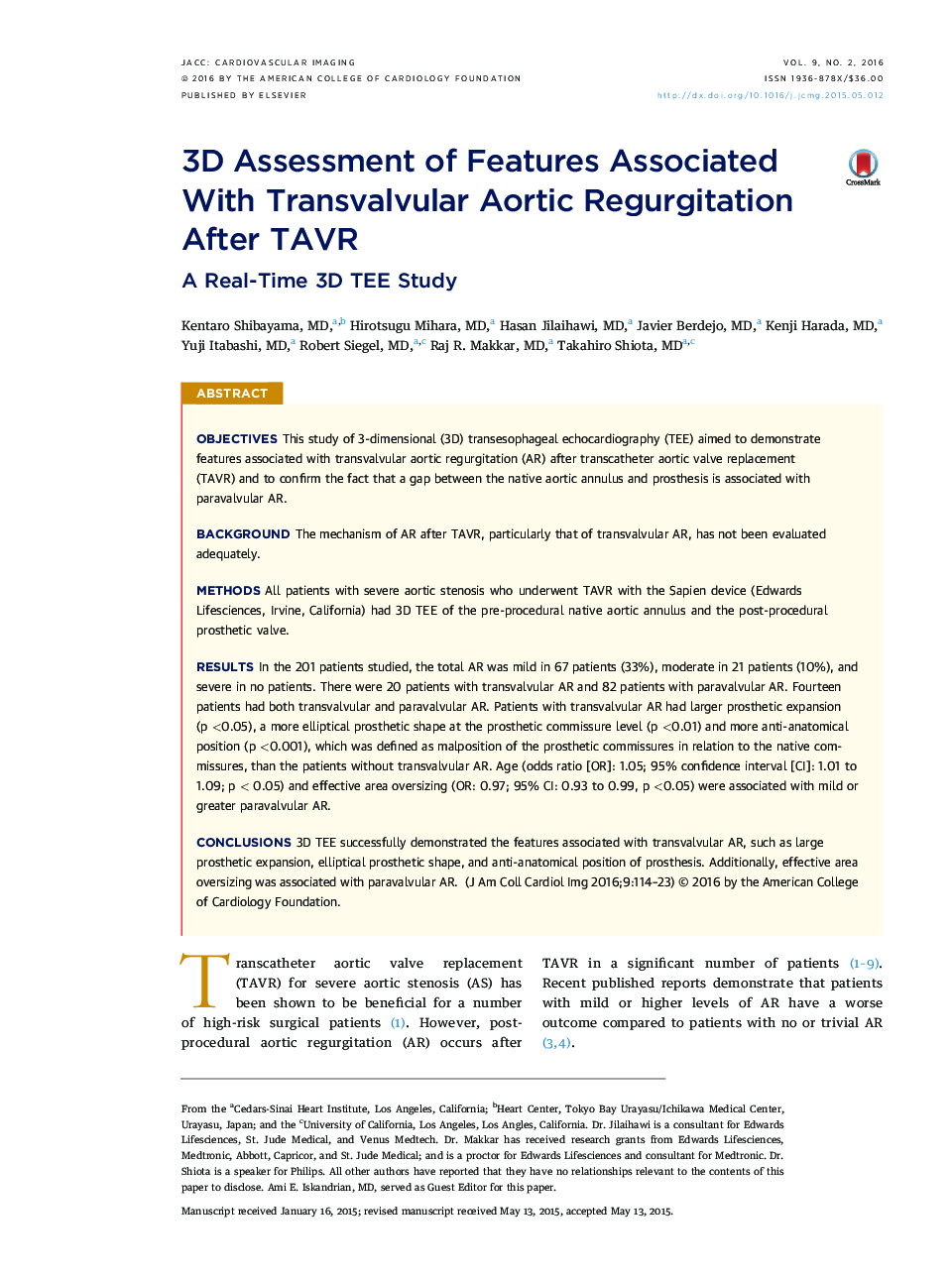| Article ID | Journal | Published Year | Pages | File Type |
|---|---|---|---|---|
| 2937616 | JACC: Cardiovascular Imaging | 2016 | 10 Pages |
ObjectivesThis study of 3-dimensional (3D) transesophageal echocardiography (TEE) aimed to demonstrate features associated with transvalvular aortic regurgitation (AR) after transcatheter aortic valve replacement (TAVR) and to confirm the fact that a gap between the native aortic annulus and prosthesis is associated with paravalvular AR.BackgroundThe mechanism of AR after TAVR, particularly that of transvalvular AR, has not been evaluated adequately.MethodsAll patients with severe aortic stenosis who underwent TAVR with the Sapien device (Edwards Lifesciences, Irvine, California) had 3D TEE of the pre-procedural native aortic annulus and the post-procedural prosthetic valve.ResultsIn the 201 patients studied, the total AR was mild in 67 patients (33%), moderate in 21 patients (10%), and severe in no patients. There were 20 patients with transvalvular AR and 82 patients with paravalvular AR. Fourteen patients had both transvalvular and paravalvular AR. Patients with transvalvular AR had larger prosthetic expansion (p <0.05), a more elliptical prosthetic shape at the prosthetic commissure level (p <0.01) and more anti-anatomical position (p <0.001), which was defined as malposition of the prosthetic commissures in relation to the native commissures, than the patients without transvalvular AR. Age (odds ratio [OR]: 1.05; 95% confidence interval [CI]: 1.01 to 1.09; p < 0.05) and effective area oversizing (OR: 0.97; 95% CI: 0.93 to 0.99, p <0.05) were associated with mild or greater paravalvular AR.Conclusions3D TEE successfully demonstrated the features associated with transvalvular AR, such as large prosthetic expansion, elliptical prosthetic shape, and anti-anatomical position of prosthesis. Additionally, effective area oversizing was associated with paravalvular AR.
